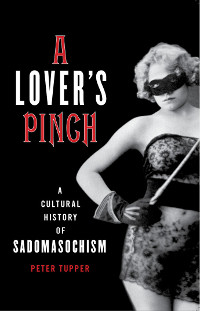An in-law was kind enough to send me a copy of the Indian magazine Women’s Era, July 2006 edition, which includes an article in English titled, “Sexual Roleplaying: Elixir of Youth”, by A. Sharma.
Women’s Era is a women’s magazine in the Women’s Day vein, written in slightly stilted English. I am told the readership is primarily English-reading village wives.
Right from the beginning, the article starts from the “marriage manual” approach. This is aimed at married couples.
Sex is an important factor between two adults in a marriage, and how they deal with this aspect of their equation often has an important impact on their life as a couple. As long as the institution of the extended joint family was live in India, the earlier bumps in a marriage were never felt and the couple often settled into a routine with time. But single-unit families, increasingly popular now, means that the couple has to bond for life and give each other mental, emotional and sexual support.
…
How can sexual fantasies help in such situations, one might ask. Simple really. Fantasies do not need action, they are just in our inds and our mind is the most important tool for enjoying anything and everything. That includes sex.
What interests me is the kind of fantasies discussed in the article. Do Indian people have different sexual fantasies than Westerners?
The first one quoted is “Naughty child needs reprimand”.
This style of fantasy is more repeated in Western cultures where the teacher figure is more desirable.
I’m puzzling over what that means. Is there no pedagogic eros in India? I had thought that India would have inherited the British public education system, for better or for worse, with all the attendant psychosexual tensions and consequent fantasies. However, another inlaw reminded me that, not only does India have its own sexual traditions, but only a minority of people get a formal education.
I have to wonder if corporal punishment was as much a part of Indian culture as it was of British culture. Ian Gibson’s The English Vice says that school beatings had been banned in France in the 19th century while they were still going strong in Britain. Yet there was a lot of kinkiness in French literature. I’d like to look into that for the USA as well. I think it is just too simple to say that a culture has a lot of corporal punishment in schools (or the military in the case of societies with compulsory service) and therefore will have it in fantasies.
“Playing doctor or nurse” is pretty straightforward: authority figure, plausibly deniable physical intimacy. “A cosy threesome” is “best left as a fantasy which is never put to the test.” There’s “Casual Sex”, the “meet me in a public place and pretend we don’t know each other” gambit.
“More-risk fantasy” is where things get interesting.
From the harmless fantasy to the more risky imagination, this category for either partner could include anything. It might include a little pain, pretension of forced sex or forbidden sex. Once again, here, total trust between the couple is needed. If you are trying it for the first time, clear boundaries must be laid down and an expression or word must be kept as a last indication that one of you has stopped enjoying it.
Thankfully, the article includes some coverage of emotional safety.
Once the fantasy is played out and the desired result experienced and enjoyed, it must never be used as a weapon against the partner. Rima experienced the negative side of such a situation. She shared her fantasy with her husband Prem and they pretended that he was a master and she was a slave. However, her husband started taunting her about it and wanted to treat her as a slave all the time. It came to a state that shey needed the intervention of a counsellor.
It was a while before Prem admitted that, although he was excited while playing the fantasy, he was disgusted with it later and wanted to punish Rima. “Suddenly, our game became a dirty detail that I wanted to forget,” said Rima.
The “master and slave” bit caught my eye. I wonder which cultural tradition that came from. Was it borrowed from the 17th-19th century colonial background, which I believe is the cultural origin of modern BDSM master-slave relationships? Or was it drawn from Indian history?
The article ends on the “BDSM is good for you and your marriage” note. You’ll be in a good mood, you’ll burn calories, you’ll sleep better, your skin will be better, and it will build trust and love with your partner. To my mind, BDSM is not necessarily good for you, nor is it necessarily bad for you either. It just is something people do, and it can be done in a healthy or an unhealthy way.
For an article in a women’s consumer magazine, it was actually pretty insightful, and I’m glad they talked about emotional safety. Now if they just talked about physical safety too, I’d be satisfied.
So is there a BDSM culture in India today? The Dickie Virgin pro dominatrix guide lists pro-dommes in North America, Europe, Thailand and even Saudi Arabia, but nothing for India. The only hint I could find is a 2003 article from the Hindu Business Line about spam email calling for “ladies ONLY between 18-22 in age located in Bombay for upcoming shoots. The shoot planned in Bombay is related to BDSM & Fetish.” I also recall a woman in a PVC or latex jumpsuit on the cover of an issue of National Geographic a year or three ago, but that’s more about fashion than fetish.
